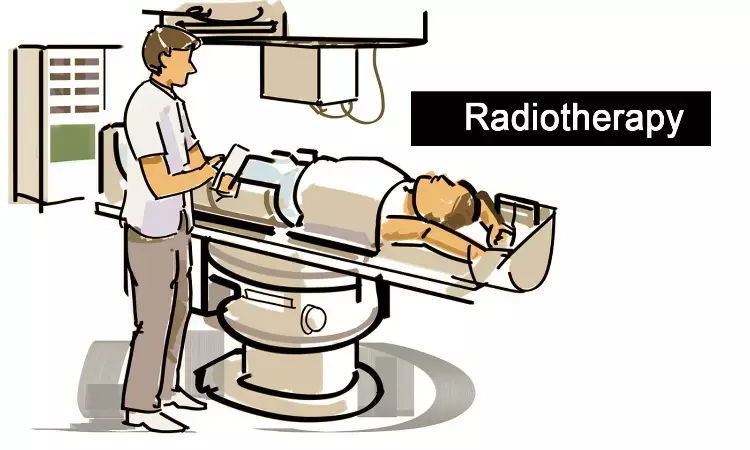- Home
- Medical news & Guidelines
- Anesthesiology
- Cardiology and CTVS
- Critical Care
- Dentistry
- Dermatology
- Diabetes and Endocrinology
- ENT
- Gastroenterology
- Medicine
- Nephrology
- Neurology
- Obstretics-Gynaecology
- Oncology
- Ophthalmology
- Orthopaedics
- Pediatrics-Neonatology
- Psychiatry
- Pulmonology
- Radiology
- Surgery
- Urology
- Laboratory Medicine
- Diet
- Nursing
- Paramedical
- Physiotherapy
- Health news
- Fact Check
- Bone Health Fact Check
- Brain Health Fact Check
- Cancer Related Fact Check
- Child Care Fact Check
- Dental and oral health fact check
- Diabetes and metabolic health fact check
- Diet and Nutrition Fact Check
- Eye and ENT Care Fact Check
- Fitness fact check
- Gut health fact check
- Heart health fact check
- Kidney health fact check
- Medical education fact check
- Men's health fact check
- Respiratory fact check
- Skin and hair care fact check
- Vaccine and Immunization fact check
- Women's health fact check
- AYUSH
- State News
- Andaman and Nicobar Islands
- Andhra Pradesh
- Arunachal Pradesh
- Assam
- Bihar
- Chandigarh
- Chattisgarh
- Dadra and Nagar Haveli
- Daman and Diu
- Delhi
- Goa
- Gujarat
- Haryana
- Himachal Pradesh
- Jammu & Kashmir
- Jharkhand
- Karnataka
- Kerala
- Ladakh
- Lakshadweep
- Madhya Pradesh
- Maharashtra
- Manipur
- Meghalaya
- Mizoram
- Nagaland
- Odisha
- Puducherry
- Punjab
- Rajasthan
- Sikkim
- Tamil Nadu
- Telangana
- Tripura
- Uttar Pradesh
- Uttrakhand
- West Bengal
- Medical Education
- Industry
Post radiation pulmonary artery thrombosis distinct from pulmonary embolism: Study

Leesburg, VA - According to an article in ARRS' American Journal of Roentgenology (AJR), the imaging findings of in situ pulmonary artery thrombosis (PAT) associated with radiation therapy (RT) are different from those of acute pulmonary emboli and do not appear to embolize. Due to the differences in clinical prognosis and subsequent management strategies, in situ PAT associated with RT--"which to our knowledge has not previously been described in the English literature," wrote the authors of this AJR article--must be distinguished from pulmonary embolism.
Searching the radiology database of a large teaching hospital to identify patients who had PAT develop after receiving RT, first author Jitesh Ahuja from the thoracic imaging department at the University of Texas' MD Anderson Cancer Center recorded the PAT's CT characteristics: number, location, appearance of filling defects, as well as the presence of associated lung fibrosis. The terminology (in situ thrombosis vs acute or chronic pulmonary embolism) used to describe PAT, the time between completion of RT and development of PAT, the size change of PAT, and any observation of new thrombi and emboli on follow-up imaging were also recorded.
With a study population consisting of 27 patients (19 men and eight women) at a mean age of 71 (range, 54-90 years), the primary malignancy was lung cancer in 22 patients (81%) and mesothelioma in five patients (19%). Whereas most PATs were solitary (93%) and nonocclusive (96%) and formed an obtuse angle to the vessel wall (89%), all PATs were eccentric within the involved pulmonary artery and located within the RT volume. The time from completion of RT to initial diagnosis of PAT on CT ranged from 53 to 2,522 days (mean, 675 days). In all patients, CT findings of radiation-induced lung fibrosis were present in the lung supplied by the affected pulmonary artery. "On follow-up imaging, none of the patients were observed to have filling defects develop in other parts of the PA, which would have suggested embolization," Ahuja et al. added.
Acknowledging that RT is a "key choice" in multimodality treatment of intrathoracic malignancies, the authors noted that RT-associated cardiovascular complications remain the leading non-cancer-related cause of morbidity and mortality among cancer survivors. "Radiologist awareness of PAT can facilitate accurate diagnosis and impact management," they concluded.
https://www.ajronline.org/doi/10.2214/AJR.19.22741
Hina Zahid Joined Medical Dialogue in 2017 with a passion to work as a Reporter. She coordinates with various national and international journals and association and covers all the stories related to Medical guidelines, Medical Journals, rare medical surgeries as well as all the updates in the medical field. Email: editorial@medicaldialogues.in. Contact no. 011-43720751
Dr Kamal Kant Kohli-MBBS, DTCD- a chest specialist with more than 30 years of practice and a flair for writing clinical articles, Dr Kamal Kant Kohli joined Medical Dialogues as a Chief Editor of Medical News. Besides writing articles, as an editor, he proofreads and verifies all the medical content published on Medical Dialogues including those coming from journals, studies,medical conferences,guidelines etc. Email: drkohli@medicaldialogues.in. Contact no. 011-43720751


